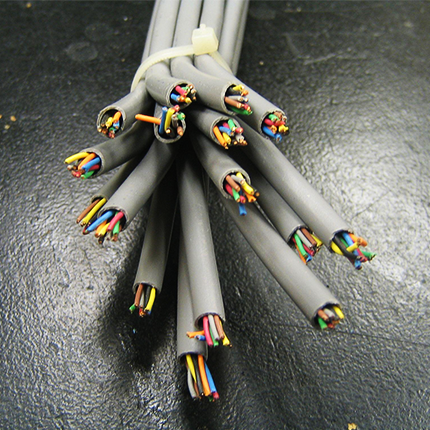I was thinking on buying a 2-4 bay HDD powered enclosure as a NAS for my mini pc, since I already have that, and buying or building a full-fledged diy NAS seems a bit expensive.
I want to hear some opinions from you guys, since it seems using this method is a mixed area from the selfhosted pros. I would be hoping that by using a powered enclosure, that would alleviate or solve the USB port overcharging issue, which have appeared in my mini pc when trying out an external HDD with a normal sata to usb converter.
Did you have any experiences with a setup like this one?
I’ve personally gone with an N100 Mini PC running Proxmox and two of these daisy-chained (purchased on sale). https://www.amazon.com/MAIWO-Enclosure-Cooling-Storage-Expansion/dp/B0D28Q187R/
The MAIWO DAS uses garbage JMicron firmware by default, and there are significant issues with their sleep functions. Because of that, it took me forever to figure out why SnapRAID kept failing mid-sync. Fortunately, new firmware seems to have fixed their issues and they’ve been rock solid ever since. I specifically had to update the firmware for all 4 of the USB controllers on each DAS.
Direct link to firmware that worked for me. https://gbatemp.net/attachments/bin-16028_jms578_std_v00-04-01-04_self_power_odd_20190611-zip.230929/
JMS578_STD_v00.04.01.04_Self Power + ODD.bin
MD5: 7701fb7a968e3ad4ca926dd7854806ff
Firmware updater tool for Windows found here. I ran this from a Virtualbox Windows 10 VM inside my Arch install: https://gbatemp.net/attachments/jmicron-jms578-sata-crystal-enclosure-fwupdate-zip.216335/
FwUpdateTool_v1_19_16_24.exe
MD5: 735ec8d9f99c457ce793739480c55706
Mirrors for posterity:
https://files.catbox.moe/e4121s.zip
https://mega.nz/file/OJAX2KhQ#67kIDJun92nqi56mFur_9vALSi2yTJXXv7ew5pYSJVY
Blog post detailing firmware update procedure for an external drive: https://ralimtek.com/posts/2021/jms578/
Detailed post on JMS578: https://gbatemp.net/threads/how-to-update-firmware-of-jmicron-jms578-usb3-0-sata-enclosure-black-screen-lock-music-stop.569158/
Alternate FOSS software for flashing I found later, but never used. https://github.com/BertoldVdb/jms578flash
Wow thank you for these links, you’re insane. And if you would start this homelab process again, then would you go with this mini PC + DAS layout again, or with desktop pc as a NAS?
I have the QNAP TL-D800S. It’s an 8 bay DAS but there is also a 4 bay variant. Works well for me. It uses SFF cables to connect to the PC and comes with the appropriate PCIe card which seems more robust to me than anything USB for this.
Yeah this option seems like a more robust option than using an USB one. Unfortunately my mini PC doesn’t offer a sata connection, but thank you for the suggestion!
It would need a PCIe slot, not a SATA connection. But I assume it doesn’t have that either then.
Do you think that PCIe card would fit on a lenovo 1L PC? Those have a PCIe slot, but only small cards fit.
Are you talking about these? They don’t look like they have a PCIe slot…
In any case, the specifications say
Form factor Low-profile 119.65 x 68.9 x 17.24 mm (Without bracket 119.65 x 68.9 x 12 mm)
Yes, many of them have a PCIe slot, example. Thanks for the specifications
I built my own and it honestly wasn’t that expensive (at the time back in 2018). I just started with the basics but built it to be expandable. I used a Define 6 case which gave me room for 12 HDDs, a mobo with the highest number of SATA ports, processor, RAM, etc and then just added drives 1-2 at a time as they filled up. My only regret is that I didn’t and still haven’t learned Linux well enough to rely on it because it runs Windows, the PC is showing its age now, and I need to think about the replacement solution and how I’ll be able to migrate 70+ TB of media and all my configurations to the new machine.
If you do run Windows, Drivepool and SnapRAID are useful for pooling everything into a single virtual disk and setting up a software RAID that will protect from drive failures without locking your data away.
And what kinda mobo have you went with? A microATX perhaps?
It’s a midtower case so I just went with an ATX board. I would like to figure out a compact solution for the future but it’s hard to house and control a bunch of HDDs in a small footprint. I don’t want to spend thousands on a NAS and I haven’t found a trustworthy DAS solution that will hold all my drives.
You might play around with PCPartPicker since it allows for so many filtering options for things like SATA ports on a mobo or drive slots in a case and see what you can come up with.
I had a setup similar to this for a year or two that ended with an hdd destroying itself one night. Probably because of the drive and not the usb enclosure I was using. Until then it worked fine, it’s definitely a viable route.
If you can swing a desktop pc case it’ll probably end up easier and cheaper and have some headroom for upgrades, that’s the route I went down after trying an escalating series of mini-pcs and running into their limits one too many times.
Sounds like a good idea, since according to the comments it seems I really shouldn’t be using DAS as a primary storage (not with USB specifically).
I have used mini PCs as a servers for years with file serving being a major duty of them. Granted my storage needs aren’t excessive, but most NUCs or Nuc-likes can hold two drives, some can have a third if you include 2.5" drives. My AsRock A300 can hold 4 drives (two of each), but its m.2 support sucks so that’s not as much of a boon as it sounds. If you need significant storage, there is no replacement for something that can hold 3.5" drives though since those can now reach 20+ GB a drive.
Get old HP thinclient T510, or Igel M340C. Got a few of those practically free online. Has Via Eden 1.2Ghz 2 core. Not powerful at all. But cold. Mine runs on hot summer days approximately between 40-50C. HP has I think 19V power source, Igel runs on 12V brick.
Get a USB-C DAS (enclosure) for your disks, those use their own power supply. Since it is USB-C performance will be very good and stable and you’ll be happy with it.
I am currently getting a replacement for my old win10+drivepool setup using hand me down parts from my old main pc. I decided to go with UNRAID this time and other than a few headaches, its been pretty simple to get going. I am already a big fan of the container/docker/app setup. My setup is 3 12tb seagate iron wolf nas drives recertified/refurbished from ebay, the nvme ssd I used as my prior boot drive as a cache drive, and a r7 1700 and ab350m pro 4 mobo with a pny xlr8 1070gpu. It was mostly free since I was replacing it with a newer gaming build. I think I spent $280 on the hdds?
I would either get a used HP Proliant microserver Gen 8 (I own one. Pretty sweet) or get a mini ITX nas case, 4 or more bays. Depending on USB doesn’t seem like a good idea to me. You can always sell your mini PC. I have slowly learned to avoid the sunk cost fallacy.
Those microservers are dope!
I use a couple of mini pcs in exactly the setup you are talking about. Only downside is throughput. Anything built in is gonna be faster for read write ops, but usb3 is plenty fast for most things including media and data sync. I run Ubuntu with ZFS, and created raid arrays for data redundancy. It works really well. I virtualize using Incus with docker inside of those tiny VMs. It’s awesome.
Did that for 3 years. Not pretty but it worked
I used USB enclosures for my RAIDs for over 20 years. The turning point has been usb3 and then usb-c even better, but I found really no difference as in the bottleneck where the mechanical drives.
Moved to an all internal sata setup a few months back because I upgraded the space and moved to a desktop form factor.
Can still recommend the USB approach tough.
BUY A QUALITY EBCLOSURE.
I always used Linux software raid, but purchased a 4 slots USB raid/jbod enclosure to keep the number of used USB ports down.
I never ever had issues with the setup, but I purchased a known-brand enclosure, one with also e-SATA, which unfortunately was/is more a fad than even been really used.
I used intel nuc j5005 for 4 years iirc with 2 bay hdd enclosure, Orico brand. Never had any problem that i hear about such as random diaconnecting. Granted i used it to host my media. So i dont pratically mind if the data is gone.
I used openmediavault with usb boot drive. Internal 2.5’ drive as docker appdata. All my media files is stored on the external enclosure. The only problem i noticed is the temperature but thats because of high ambient temp.
If youre planning to use ext enclosure for critical data. Might wanna think twice. But, if you have proper backup plan. Sure why not.
Doing it now with a not so mini second hand pc







